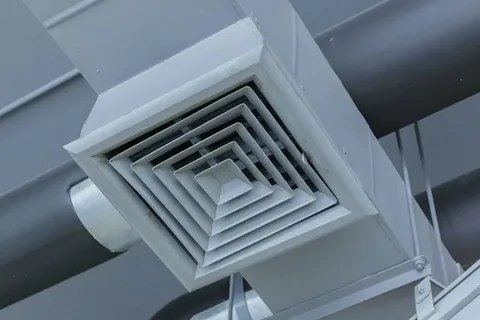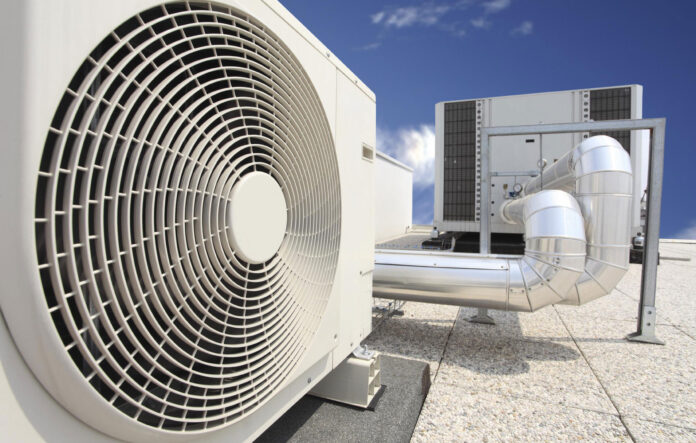Mechanical ventilation technology advancements have revolutionised how healthcare providers deliver critical care to patients with respiratory failure. Modern mechanical ventilators enhance patient outcomes and overall quality of care through precision control and innovative features. In this blog post, we will explore the role of mechanical-ventilation in critical care, the key components of modern ventilators, strategies for optimizing ventilator settings, and the impact of ventilation on long-term patient recovery. Stay tuned to discover how mechanical-ventilation advancements shape the future of patient care.
Understanding the Role of Mechanical-ventilation in Critical Care
Mechanical-ventilation plays a pivotal role in critical care by providing life-sustaining support to patients with respiratory failure. Understanding its significance involves grasping its technical aspects and impact on patient physiology. Mechanical-ventilation primarily assists or replaces spontaneous breathing when a patient’s respiratory system is compromised. It delivers oxygen to the lungs and removes carbon dioxide, helping to maintain adequate gas exchange. However, its use is not without risks. Barotrauma, volutrauma, and ventilator-associated pneumonia are potential complications that must be managed vigilantly.
Beyond its technical functions, understanding mechanical-ventilation involves recognizing its role in critical care management’s broader context. Ventilator settings must be tailored to each patient’s needs, considering factors such as lung pathology, hemodynamic stability, and metabolic demands.
Moreover, clinicians must continuously monitor and adjust ventilation parameters to optimize oxygenation and ventilation while minimizing harm. An appreciation of the physiological consequences of mechanical-ventilation is crucial. Positive pressure ventilation can alter cardiovascular dynamics, influence organ perfusion, and even exacerbate lung injury in some instances. Thus, a nuanced understanding of its effects on systemic physiology is essential for providing comprehensive critical care.
Key Components of Modern Mechanical Ventilators
Modern mechanical ventilators are complex medical devices that support patients with respiratory failure or insufficient breathing. These devices consist of several key components essential for their functionality and effectiveness.
- The ventilator features a control system, typically equipped with advanced algorithms and settings, allowing healthcare professionals to adjust parameters such as tidal volume, respiratory rate, and inspiratory and expiratory pressures. This control system ensures precise delivery of breaths tailored to the patient’s specific needs.
- Another critical component is the ventilation circuit, which includes tubing, connectors, and valves that deliver oxygen-enriched air to the patient’s airways and facilitate carbon dioxide removal. The circuit must be designed to minimize resistance and dead space, optimizing gas exchange efficiency.
- A ventilator also incorporates sensors and monitors to assess airflow, pressure, and oxygen saturation levels continuously. These sensors provide real-time feedback to the control system, enabling adjustments to maintain optimal ventilation and patient safety.
- Modern ventilators often feature advanced ventilation modes, such as pressure support ventilation, volume control ventilation, and synchronized intermittent mandatory ventilation. These modes offer greater flexibility and customization to suit various patient conditions and therapeutic goals.
- Ventilators are equipped with alarms and safety mechanisms to alert caregivers of potential issues such as disconnection, high pressure, or low oxygen levels, ensuring timely intervention and patient well-being.

Optimizing Ventilator Settings for Improved Patient Oxygenation
Optimizing ventilator settings is crucial for enhancing patient oxygenation and overall respiratory function, especially in critical care scenarios. Ventilators deliver oxygen-rich air to the lungs and remove carbon dioxide, mimicking natural breathing. By adjusting settings like tidal volume, respiratory rate, positive end-expiratory pressure (PEEP), and a fraction of inspired oxygen (FiO2), clinicians can fine-tune ventilation to match individual patient needs.
Tidal volume, the air delivered with each breath, must be carefully adjusted to prevent lung injury while maintaining adequate oxygenation. Respiratory rate regulates the frequency of breaths, balancing oxygenation with the risk of ventilator-induced lung injury. PEEP maintains lung recruitment by preventing alveolar collapse at the end of expiration, enhancing oxygen exchange.
FiO2 levels dictate the concentration of oxygen delivered, adjusted to achieve optimal arterial oxygen saturation without causing oxygen toxicity. Additionally, monitoring parameters such as arterial blood gases, pulse oximetry, and ventilator waveforms provide real-time feedback on oxygenation status and guiding adjustments.
Monitoring and Managing Ventilator-Induced Lung Injury
To optimise patient outcomes, monitoring and managing ventilator-induced lung injury (VILI) is paramount in critical care settings. VILI occurs due to mechanical-ventilation, often exacerbating pre-existing lung conditions or causing new injuries. Effective management strategies aim to minimize further damage while ensuring adequate oxygenation and ventilation. Continuous monitoring of patients on mechanical-ventilation is essential. Parameters such as tidal volume, airway pressure, and respiratory rate are closely observed to prevent excessive lung strain. Advanced techniques like esophageal pressure monitoring can provide insights into transpulmonary pressure, aiding in customising ventilator settings to minimize VILI risk.
Lung-protective ventilation strategies, such as low tidal volume ventilation and permissive hypercapnia, are widely employed to mitigate VILI. In severe cases, prone positioning and neuromuscular blockade may be utilized to redistribute lung stress and improve oxygenation. Regular assessment of lung function through imaging techniques like chest X-rays or CT scans allows clinicians to monitor disease progression and adjust treatment accordingly. Moreover, biomarkers like cytokines and inflammatory mediators can offer insights into lung injury severity and guide therapeutic interventions.
Innovations in Ventilator Technology and Patient Comfort
Innovations in ventilator technology have significantly evolved to prioritize the efficacy of respiratory support and the comfort and well-being of patients. One notable advancement lies in developing quieter ventilators, reducing noise levels within clinical settings to mitigate patient stress and promote a healing environment. Additionally, manufacturers have focused on designing ventilators with sleeker, more ergonomic interfaces, enhancing ease of use for healthcare providers and reducing the intimidation factor for patients.
Another crucial aspect of innovation is the integration of advanced monitoring capabilities into ventilator systems. These features enable real-time patient respiratory parameter tracking, facilitating precise ventilation settings adjustments and enhancing patient safety. Moreover, innovations in humidification systems have been pivotal in maintaining optimal airway moisture levels and preventing discomfort associated with dry respiratory passages.
Incorporating wireless connectivity and remote monitoring functionalities allows healthcare professionals to closely monitor ventilated patients from a distance, promoting flexibility in care delivery and facilitating early intervention when necessary. Moreover, advancements in battery technology have led to the development of portable ventilators, empowering patients to maintain mobility and independence while receiving respiratory support.
The Impact of Mechanical Ventilation on Long-Term Recovery
Mechanical ventilation, while often life-saving in acute situations, can also profoundly affect long-term recovery for patients. The impact of prolonged mechanical-ventilation spans physiological, psychological, and functional dimensions. Physiologically, prolonged ventilation can lead to muscle atrophy and weakness due to disuse, impacting mobility and functional independence post-discharge. Ventilator-associated pneumonia (VAP) further complicates recovery, prolonging hospital stays and increasing mortality rates.
Psychologically, the experience of being mechanically ventilated can cause anxiety, post-traumatic stress disorder (PTSD), and depression, all of which can impede long-term recovery. Sleep disturbances are common, affecting cognitive function and emotional well-being. Functional recovery may be hindered by prolonged immobilization and delirium associated with sedative use during ventilation, leading to cognitive impairments and difficulties with activities of daily living.
Addressing these challenges requires a multidisciplinary approach encompassing early mobilization, sedation minimization, psychological support, and comprehensive rehabilitation strategies. Additionally, advancements in ventilator technology and care protocols aim to mitigate the adverse effects of mechanical-ventilation on long-term recovery, emphasizing the importance of personalized, patient-centred care throughout the continuum of critical illness.
Strategies for Minimizing Ventilator-Associated Infections
Minimizing ventilator-associated infections (VAIs) is paramount in healthcare settings to ensure patient safety and improve outcomes. Implementing comprehensive strategies can significantly reduce the risk of these infections.
- Hand Hygiene: Rigorous hand hygiene among healthcare workers is foundational. Proper handwashing with soap and water or alcohol-based hand rubs before and after patient contact minimizes the spread of pathogens.
- Oral Care: Regular oral hygiene, including tooth brushing and mouth rinses with chlorhexidine, reduces the colonization of bacteria in the oral cavity, which can be aspirated into the lungs.
- Elevating the Head of the Bed: Keeping patients in a semi-upright position (30-45 degrees) reduces the risk of aspiration, preventing the entry of oral and gastric contents into the lungs.
- Daily Sedation Interruption and Weaning: Minimizing sedation and promoting daily interruption helps assess patients’ readiness for weaning from mechanical-ventilation, thereby reducing the duration of ventilation and associated complications.
- Cuff Pressure Management: Proper maintenance of endotracheal tube cuff pressure prevents microaspiration of secretions and minimizes the risk of VAI.
Collaborative Approach to Enhancing Mechanical-Ventilation Outcomes
A collaborative approach to enhancing mechanical-ventilation outcomes involves the coordinated effort of multidisciplinary teams to optimize patient care and achieve better clinical results. In this approach, respiratory therapists, physicians, nurses, and other healthcare professionals work together seamlessly, leveraging their unique expertise to tailor mechanical-ventilation strategies to individual patient needs.
One key aspect of this collaborative approach is communication. Team members regularly exchange information, discuss patient progress, and adjust ventilation settings based on evolving clinical parameters. This open dialogue fosters a shared understanding of patient status and treatment goals, leading to more effective care delivery. Collaboration facilitates the implementation of evidence-based practices and protocols. By pooling knowledge and resources, healthcare teams can stay abreast of the latest research findings and best practices in mechanical-ventilation, ensuring that patients receive the most appropriate and up-to-date care.
Another benefit of a collaborative approach is the ability to anticipate and mitigate potential complications associated with mechanical-ventilation. By proactively identifying risk factors and implementing preventive measures, such as lung-protective ventilation strategies and early mobilization protocols, teams can reduce the incidence of ventilator-associated complications and improve patient outcomes.
Conclusion
Patient outcomes in critical care settings. With modern ventilators with advanced sensors, software algorithms, and innovative features, healthcare providers can optimize ventilator settings for better oxygenation levels and patient comfort. Monitoring and managing ventilator-induced lung injury and strategies for minimizing ventilator-associated infections are crucial in enhancing patient safety during mechanical ventilation. A collaborative approach among healthcare teams ensures comprehensive assessment and management of patients on mechanical-ventilation, leading to improved outcomes and quality of care.
FAQs
How do advancements in mechanical-ventilation improve patient outcomes?
Advancements in mechanical-ventilation systems, such as advanced sensors, software algorithms, and customizable settings, allow for more precise and tailored patient care. This can lead to improved oxygenation levels, reduced risk of complications, and enhanced overall patient outcomes.
What are the latest technological innovations in mechanical-ventilation systems?
- Noise-reduction features
- Adjustable mode settings
- Wireless connectivity for remote monitoring
Can mechanical ventilation be personalized to individual patient needs?
Modern mechanical ventilation systems can be personalized to meet each patient’s unique needs. Healthcare providers can optimize care and improve patient outcomes by fine-tuning ventilator settings based on individual requirements.
How do healthcare providers ensure the effectiveness and safety of mechanical-ventilation?
Healthcare providers ensure the effectiveness and safety of mechanical-ventilation through regular monitoring, adherence to best practices, proper maintenance of equipment, and collaboration among healthcare teams. Continuous assessment and adjustment of ventilator settings are crucial in ensuring the best outcomes for patients.
| Related Business Listings |
| Contact Directory |
| Local Business Profiles |

